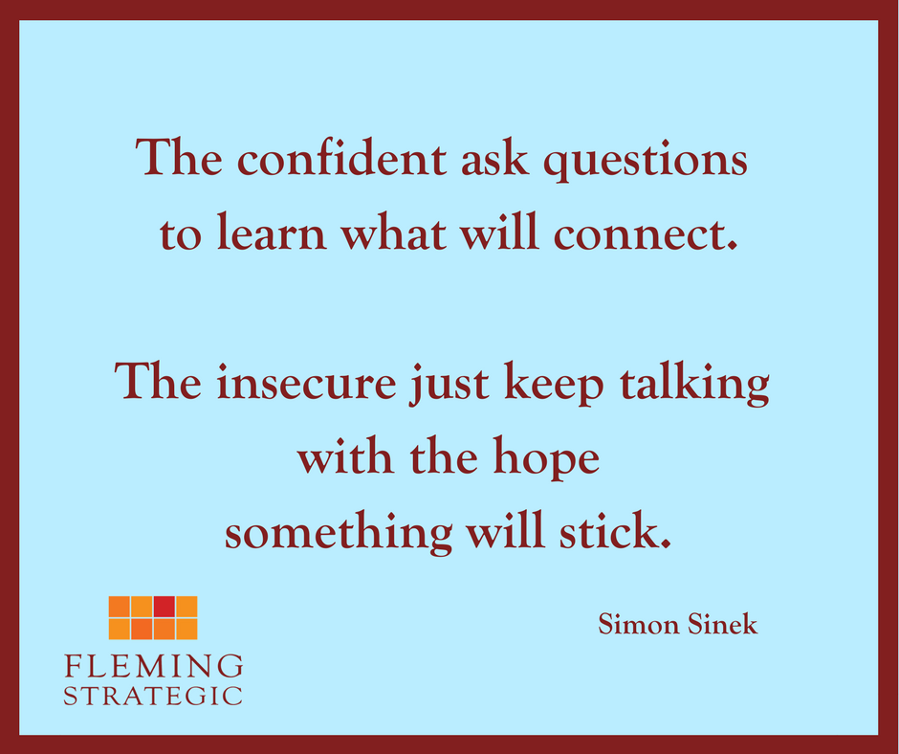Why does your brand matter for building a book of business?
Corporations have known the importance of branding for years, and their brands sometimes take on a life of their own. Take Southwest, for example. NYSE stock symbol: LUV. Founded on exhibiting care for employees and customers, the Southwest brand is about being nice, straightforward, and creative. (See more about that and why it matters for lawyers here)
Just like a corporation, you need to have a strong brand as a practitioner, so that you’re easily distinguished from others in your field and so it’s clear what you stand for.
While marketing methods will evolve and respond to current industry and cultural trends, your brand is based on who you are, your core principles, mission, and values. You may make adjustments to your brand over time to reflect your growth, but those core factors will rarely change in a way that will fundamentally alter your brand.
Branding is something you and your team must do on a daily basis, through every representation, with every phone call and email, with all work produced, and every invoice you provide to a client.
Here’s an example, though it’s by no means the end of the story… Consider the law firm Cravath, Swain, and Moore. Everything that emanates from the firm reinforces three key messages:
- The firm has been in existence for two centuries,
- Its practitioners are recognized for their skill and commitment to their clients, and
- Clients seek out Cravath for their most challenging and significant legal work.
From those messages alone, anyone looking for a lawyer knows instantly whether Cravath might be the right choice for them and whether their values are likely in line with the firm’s. Cravath’s brand is clear, compelling, and different from competitor firms.
And now it’s your turn.
If you’re aiming to be a RainMaster (or even a rainmaker, for that matter), you must identify your brand and your firm’s brand.
Start by asking yourself these questions, among others:
- Who are you as a practitioner?
- What specific value do you bring to your clients? (What would your clients say?)
- How do you make it easier or better to work with you than with another lawyer?
- What do your clients expect and know they will receive as a result of working with you?
- Why do clients seek you out?
Each of these questions, when answered with care and when your client engagements demonstrate your answers, creates the basis for a focus on client relationships and building client value.
I’ve uncovered a shortcut for answering who you are as a practitioner in a clear, compelling way: the attorney avatar. An attorney avatar defines a key aspect of your brand as well as the value you offer clients, all based on who you are as a practitioner. A few examples:
- Are you a Personality, meaning someone who’s highly social, who naturally builds a wide and varied network of contacts, who skillfully introduces those contacts to one another, and who has great influence among her contacts? As a client, you’d want access to a Personality because you’ll have entrée into a network through someone who exercises influence among its members.
- Are you a Partner, meaning someone who collaborates closely with clients, who seeks client input, and thinks in terms of how “we” might move forward? A client would want to work with a Partner to get insight on the legal issues she’s facing and to jointly explore the best route forward.
- Are you a Prophet, meaning a lawyer who takes matters focused on one particular issue (or a small handful of issues) with the intent of using those matters to advance the law in the direction that the lawyer believes the law should be moving? A client would work with a Prophet to push the law not just as it applies to their matter, but as it applies more generally. Civil rights and liberties are one example of an area of law that may attract Prophets.
If none of those avatars grabs you, that’s ok — there are three more avatars, and one will describe the way you function in practice.
Once you’ve defined your brand (in terms of your attorney avatar and otherwise), the next question becomes how you convey it. That brings us to positioning, which is the process of sharing your marketing message, particularly including your brand, with clients and contacts. Positioning depends upon business development activities such as communicating with potential clients and referral sources through key marketing avenues.
I’ll share more information about branding and positioning in upcoming emails, but here’s the key takeaway: you must have a brand as an attorney, and that brand informs the way you market yourself and your practice as well as your positioning among other practitioners in your field.
If you fail to understand and shape your brand, you may be misperceived in a way that limits your business development opportunities; if you fail to pay attention to your positioning, you may be invisible in the market or a “best kept secret” — both of which result in too little business of your own.
P.S. Eager to learn how you can put this all together to become highly and credibly visible so you can build a solid book of business? [Here’s the fast track.]


